A customer loyalty program is a customer-facing marketing strategy designed to create incentive for people to continue to choose and engage with your store, ultimately creating brand loyalty. This guide will walk through the seven steps for how to create a loyalty program.
Key takeaways:
- A good customer loyalty program will encourage people to visit and buy from your store time and time again, driving your sales and increasing brand loyalty.
- Loyalty program software can be integrated into point-of-sale (POS) systems and ecommerce sites.
- There are many different kinds of loyalty rewards and program structures; choose the best for your business type or model.
- Train your staff to promote the program well and adjust it as needed based on results.
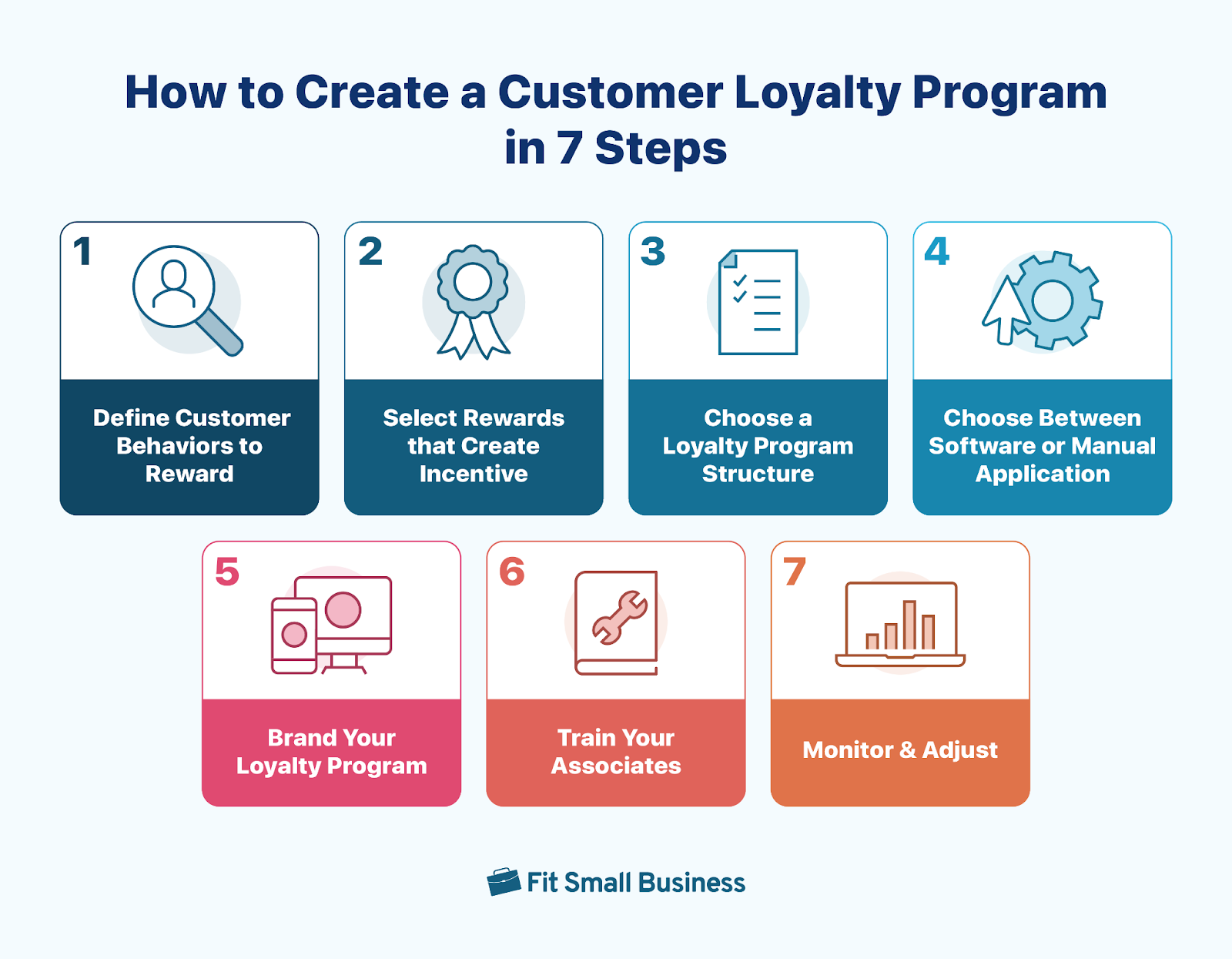
Step 1: Define the Customer Behaviors to Reward
In general, in a customer loyalty program, a customer performs an action and then they get a reward. To ensure you get the results you want, you need to define the goals of your loyalty program so that it promotes specific shopper behaviors and boosts targeted areas of your business.
For example, say you want to bolster your online reviews to boost trust and traffic to your ecommerce site. Either manually or using loyalty software, you can structure your loyalty program so that members get rewards each time they write a product review.
Some behavior that you could offer rewards for include:
- Writing referrals
- Spending a certain amount of money
- Interacting with your brand on social media (e.g., tagged photos, comments, likes, follows)
- Buying a specific product
- Shopping on sales days
- Leaving product reviews
- Uploading a photo
- Visiting your store a certain number of times
- Sharing your store online
The goals of your loyalty program will ultimately determine what actions you will reward. Once you have determined this, the next piece of the puzzle is to decide what those rewards will be.
Step 2: Select Rewards that Create Incentive
A desirable reward or incentive for customer actions will make people want to interact and spend at your business and will foster their loyalty.
For example, say you sell flowers. In this case, a reward of a mini bouquet would be a great prize to motivate your customer base, whereas an Amazon gift card would likely be a less effective reward.
Consider what will excite your customers when choosing a reward incentive. Try:
- Store credit
- Small gifts
- Gift cards (to your own store or others)
- Exclusive products
- Exclusive deals or offers
- Moving up in membership tiers
Step 3: Choose a Loyalty Program Structure
Now you need to select a customer loyalty program structure, which defines exactly what actions reap benefits and what those benefits are.
Did you know?: Customer loyalty programs are key for starting your retail business as it can grow your customer base and drive sales. In fact, a popular statistic in the loyalty landscape says that a mere 5% increase in your customer retention can increase your revenue by anywhere from 25% to 95%.
Here is a list of seven different kinds of loyalty programs that you can choose from, the ends that they each serve, and examples of where they have been successful.
Best for: Businesses looking to target large spending and/or specific customer behaviors.
The points program is the most popular kind of loyalty program used today. It offers points to customers based on how much they spend or specific actions that they take (like signing up for newsletters or leaving product reviews). Customers can then redeem their points as store credit or other prizes.
A great example of a successful points loyalty program is the Soludos brand’s Sunshine Club. When customers sign up and become a member in this program, they will start to receive 10 points for every dollar spent on the Soludos site. From there, they can redeem their points for money off future purchases. As a result, Soludos increased their customer spend by 32.8% and repeat purchase rates by 39%.
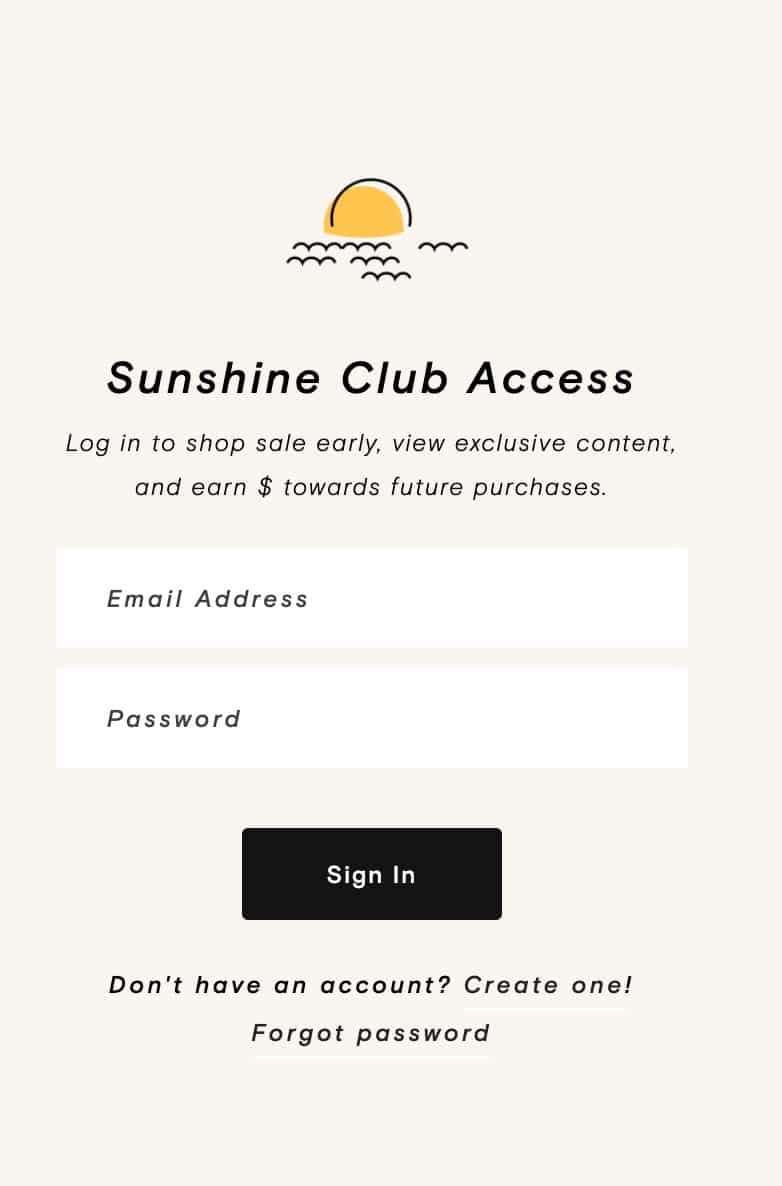
The Soludos Sunshine Club is a great example of a successful points program. (Source: Soludos)
Look for a software program with a customizable incentives and rewards option so that you don’t get pigeon-holed into a rigid points structure that can’t serve your business’s evolving needs.
Best for: Businesses looking for a simple program structure that promotes spending.
In a cash back program, you offer customers store credit based on how much they spend. This program is similar to the points program in that it rewards a specific customer behavior. In this case the loyalty action is defined as “the more you spend, the more you earn.”
One example is the TJX rewards program through TJ Maxx. The program is simple: When you use your TJX card at a TJ Maxx store, you get 5% cash back in store credit. This program promotes larger purchases in pursuit of rewards, and is easy for customers to understand and follow.
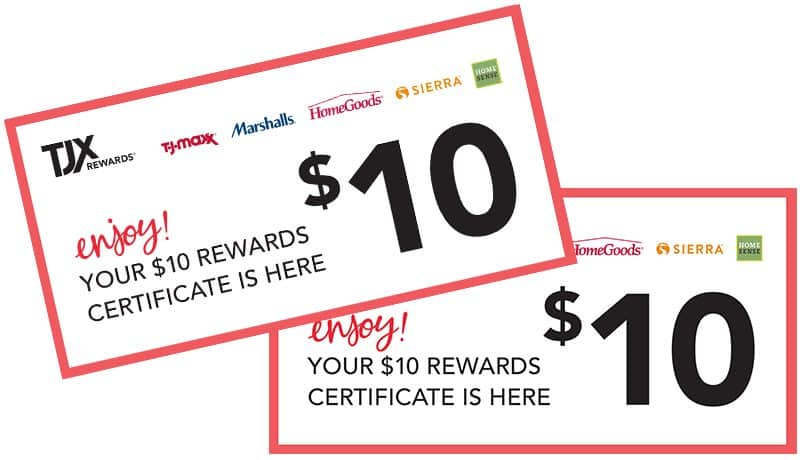
TJ Maxx offers cash back in the form of certificates that can be redeemed as store credit.
(Source: TJ Maxx Rewards – Synchrony)
Best for: Businesses that rely on a steady stream of regular customers or those wanting to promote frequent purchases.
A punch card program is another loyalty structure in which you tally people’s purchases and offer a free reward once the customer reaches a certain number. This structure specifically promotes frequent visits and the cultivation of “regular” customers.
For example, Aviano, a small coffee shop located near a hub of businesses, has a loyalty program that offers a free coffee for every 10 you purchase. The small shop is constantly flooded with people and has a steady stream of regular customers from the surrounding areas.
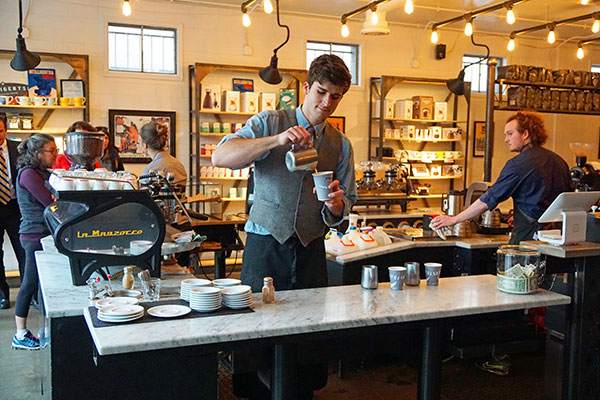
Aviano offers a customer loyalty program that rewards repeat customers.
(Source: Cherry Creek North)
People want their rewards program to be digital. Get rid of the paper card and offer a digital punch card system, like the one from CandyBar.
Best for: Businesses with a customer base interested in exclusivity and gamification.
A tiered program is a loyalty program structure where you create different levels that customers can reach once they meet a threshold of points. As customers move up the levels (or tiers), they get access to better and more exclusive rewards and offers.
Tiered programs are typically paired with a points program, and use exclusivity and gamification to incentivize customers to make purchases.
Gamification: The process of introducing game elements—like competition and scoreboards—into areas where they are not typically found, like your loyalty program.
REN, a clean beauty brand, has a tiered rewards program called “Clean Collective Rewards” where customers can move through Ally, Advocate, and Activist tiers as they purchase clean beauty products and interact with Ren’s social media. As members move up the ranks, they get access to better deals and exclusive offers and promotions. With this incentive in mind, Ren’s loyalty program has seen major results.
REN’s team saw a 68% increase in customer spend by loyalty members, and its member repeat purchase rates also grew, reaching values that were 63% higher than guest visitors. Not only that, members who redeemed these loyalty rewards also purchased from the brand nearly two and a half times more frequently over the course of a year, compared to non-members. As a result, REN generates 38% of its total revenue from loyal customers.
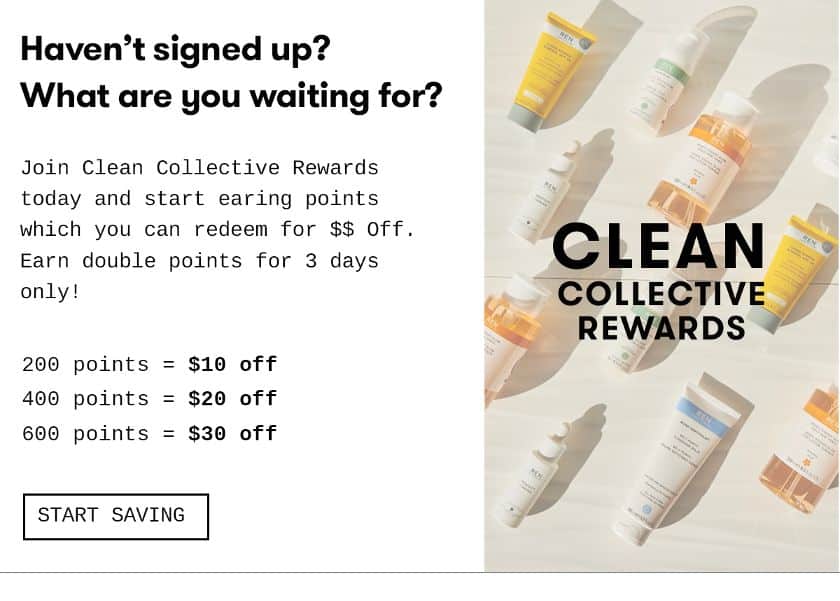
Ren uses a tiered membership program to breed loyalty to its brand and products. (Source: Milled)
Best for: Businesses in shopping centers or those that would otherwise benefit from sharing a customer base with other brands.
A coalition program is a loyalty structure in which customers can get access to deals from two or more businesses in exchange for shared user information. For example, say your store is on a busy street of shops and you all decide to join a coalition loyalty program for the neighborhood. So, if a customer signed up for a loyalty program at one of the shops, they would be signing up for the neighborhood coalition of loyalty programs.
In this strategy, groups of shops will hold events for their loyalty members, like combined sales, special parties, or coalition-wide offers. In certain coalitions and with certain software, individual stores are also able to hold their own sales and market to the shared coalition customer base.
An example of a coalition customer base is the Pearl Street Rewards Program in Denver. Pearl Street is a popular shopping street filled with shops and restaurants. Many of the stores work together in a shared loyalty program that gives members access to neighborhood-wide deals and invites to special events.
Best for: Businesses using loyalty software with customization options or those otherwise looking to combine loyalty structures for maximum appeal.
Hybrid loyalty programs offer a combination of several different kinds of loyalty structures. For example, as we covered earlier, points and tiered structures are typically used together, and you might also see coalition and punch cards, or premium and tiered.
For example, Blue Coast gym offers a punch card membership to all its loyalty members. Additionally, as members take classes, they gather points that can be redeemed for gym gear and apparel. Blue Coast did not confine itself to a single structure—it was creative and tried a combination of loyalty program ideas.
Step 4: Choose Between Software or Manual Application to Run Your Program
Once you have determined how you are going to structure your loyalty program, it is time to decide whether you want to run your program manually or with loyalty program software. For manual applications, you will track when customers perform loyalty actions, and then manually award them the points or rewards.
On the other hand, loyalty program software can integrate your loyalty program with your existing POS system and ecommerce site and then track member actions, keep member information on file, automatically award points or other rewards, send out outreach messages, and run reports on your program’s success. With certain software programs, you can even create automatic messages that go out with set triggers. For example, you can align your marketing initiatives with promotional messages to your loyal customers, so each time you hold a sale or event, an alert goes out via text or email.
When looking at loyalty software, some things you will want to consider include:
- Flexibility of rewards structure: Some programs let you choose how you want to structure your loyalty programs and some have a set structure already. Look at the types of loyalty programs the software can support and how flexible you can be in designing it.
- Price: Most programs scale their pricing either based on the size of the business or the number of available features. Understanding how pricing works will help you understand cost-effectiveness.
- Customization: Different software have different visual customization capabilities, from how things appear on your website to the messages you send. Consider how much branding you want for your program when considering software.
- Integrations: You will definitely want to integrate your loyalty program into your website and POS system and different software will have different integration capabilities.
Our top pick for loyalty software is LoyaltyLion for its flexible reward structure options, branding capabilities, and POS and ecommerce integrations. You can read more about our other top loyalty program picks in our guide to the best customer loyalty program software.
Step 5: Brand Your Loyalty Program
In addition to choosing a rewards structure that will incentivize people to shop and spend at your business, you also have to check that your loyalty program is cohesive with the rest of your brand.
Did you know?: The consistent presentation of a brand has been shown to increase revenue by up to 20%.
Here are a few elements that you can customize to keep your loyalty program on brand.
- Rewards currency: Rather than simply calling them “points,” brand your rewards currency. If you own a plant shop, for example, your points could be called “seeds.”
- Interfaces: If you are presenting your loyalty program online, be sure that the customer portal, the rewards tracker, and any other customer interfaces are consistent with the rest of your brand and website aesthetic.
- Messaging: If you are sending out texts, emails, or displaying text on posters, be sure that you present information in your brand voice.
- Merchandise: Consider offering branded merchandise to your loyalty members.
A great example of a loyalty program that has been branded seamlessly from top to bottom is Chewy, a pet supply online retailer. Chewy offers a loyalty service where you can make an account and get access to its auto-ship feature and great pet supply deals. Chewy’s entire branding concept is that it cares about your pet, and it has designed every aspect of the brand to demonstrate this.
From deals “to help care for your best friends” to personalized pet birthday letters with special offers—Chewy knows how to create a loyalty program that speaks to its brand image.

Chewy sends out birthday cards for its loyalty members’ pets’ birthdays. (Source: Chewy)
You can use outreach marketing strategies like email and text campaigns to offer special rewards or simply to remind members of your business. Send out these messages by hand or use a loyalty program software that allows you to send out messages en masse, and be sure to tailor the message to your brand.
Tons of options exist for marketing methods that promote a loyalty program. You can contact people to let them know about events or sales, offer deals, send out surveys, remind them of their rewards opportunities, or to invite them back. Keep your brand voice in mind when crafting these messages, and be sure that you are creating something that will be compelling to your members.
Mango, a women’s clothing brand, has a great text and email marketing program. To join the loyalty group, you provide your information in exchange for a coupon code. Then the brand can send you messages about new collections, sales, and survey requests.
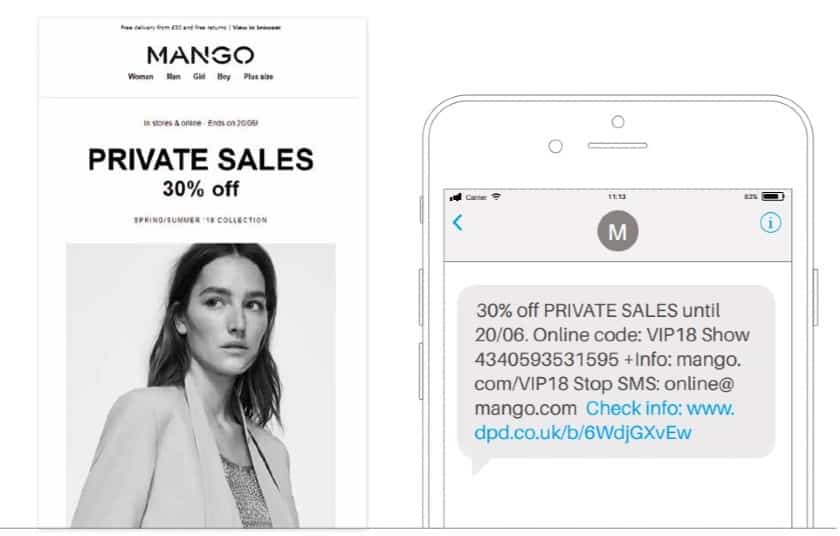
Send out messages via email or text to keep your customer in the know and promote engagement. (Source: BigCommerce)
Step 6: Train Your Associates
While you are the one that creates and oversees your program, your employees will be the ones implementing your program day-to-day and pitching it to potential new members.
Be sure that you train your employees not only on all the terms of the program, but also on how to present it to new customers, operate any interfaces so they can answer questions, and troubleshoot any problems. You will also want to create a written protocol for your training initiative so that managers and other staff can implement the training as well.
For example, you can use a training checklist to be sure your team is checking off all the skills new associates will need to explain and promote your loyalty program. Checklist items should include learning your program’s terms, shadowing more experienced members who implement the program well, and coming up with their own spiel for introducing the program.
Step 7: Monitor & Adjust
You’ll need some sort of reporting mechanism to ensure that your loyalty program is actually producing the results you want. If you are trying new strategies,offering new incentives, or simply want to gauge your program’s success, you should create a means of tracking your program over time.
Most loyalty program software have built-in reporting systems for you to use. In addition to showing program performance over time, many can also report on customer behavior and journeys. This gives you insights on how you can target customers with specific methods to increase engagement and boost loyalty.
When looking at loyalty programs or creating your own reporting infrastructure, consider the key retail metrics that are most important to you for understanding your program. A few examples include:
- Customer behaviors
- Customer retention rate
- The number of members
- Customer segmentation
- Offer performance
- Conversion rate
- Average transaction value (This will increase if customers engage with your loyalty program)
- Individual employee sign-ups
Whatever metrics you choose to measure, use reporting insights to make adjustments to your program that will help it prosper.
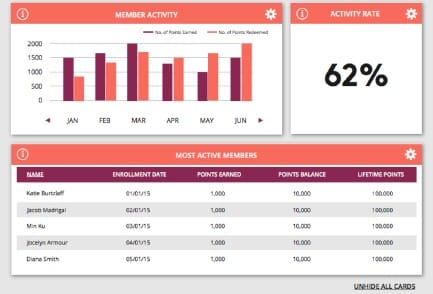
Use reporting tools within loyalty software to get insights into your customers and program performance. (Source: Annex Cloud)
Why Create a Customer Loyalty Program?
The main purpose of a customer loyalty program is to make people want to consistently buy from your brand because they’ll get rewarded for doing so. Approach these loyalty programs with a win-win mindset. Both you and your customers should feel like you’re getting a great deal out of the exchange.
Here are some of the benefits your business can reap from implementing a customer loyalty program:
Improved Customer Engagement and Retention
Having a well-designed loyalty program can improve customer engagement with your brand and convince customers to go back to your products and services again and again. This not only serves to potentially increase profits in the short term, but can also help revive customer interest if they begin to wander to competitors or if their spending levels drop.
Attract New Customers
A good loyalty program can also attract new customers to try out your offerings, and possibly become loyal and consistent buyers themselves. If your current customers are impressed by your loyalty rewards and truly feel like they are winning every time they stay loyal to your brand, they are more likely to recommend you to others. Your current customers essentially become marketing agents that bring in new buyers—and more revenue.
More Consistent Sales
If buyers latch onto your loyalty program, they’ll purchase products more consistently—especially if you design the program to reward them for doing so. This not only leads to greater total profits but also makes monthly or yearly earnings more predictable. That in turn can lead to more reliable financial reserves that can carry your store through lean times or seasonal difficulties.
Frequently Asked Questions (FAQs)
Click through the following questions to learn more about how and why to implement a customer loyalty program.
A loyalty program will improve customer engagement and retention, gain you new customers and additional marketing, and make profits more consistent and reliable over time.
Define customer actions or behavior you want to reward; select rewards that create incentive; choose a loyalty program structure; decide between software automation or manual application; brand your loyalty program; train your staff; and adjust the program as needed.
When monitoring your program’s performance and deciding where and how to make changes, you can look at metrics like customer retention rate, loyalty offer performance, conversion rates, average transaction value, and overall number of members.
Bottom Line
Customer loyalty programs play a huge role in driving your business. From how you brand your interface to the rewards you offer to the overall structure—you should take care to create a loyalty program that is in line with your brand and will speak to your customers. Use the guide above to walk you through each step of crafting your loyalty program and watch as customers come back again and again.

